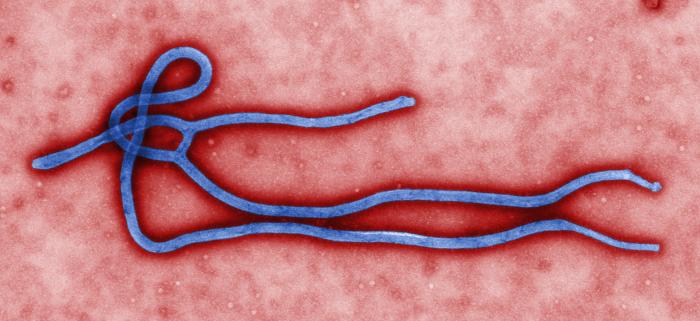Written by Alai Qudus

Ebola, perhaps one of the greatest recent public health scares, is slowly beginning to fade away. However, despite the fact that the actual spread of Ebola has slowly died down, the long term issues are now rising to the surface. Thanks to advances in research, scientists are able to create various means in order to understand the long term effects of the deadly virus.
To break it down, through many studies scientists have discovered that some of the survivors who came into contact and were infected with the Ebola virus, are now faced with even harder times post-infection. Aside from having the word “Ebola” attached to their identities, those survivors are now faced with years of chronic suffering including vision problems, memory loss, as well as body aches–symptoms that survivors must deal with for the remainder of their lives[1].
The evidence for the important research advancements made is present through the new information found about Ebola. In terms of preventative measures, research for a vaccine was initiated; however, difficulties came about in terms of timing [2]. For instance, by the time the vaccine was cleared for testing, the location of the population being tested was no longer as affected by Ebola. As a result of this, researchers focusing on the Ebola epidemic in Liberia shifted their focus towards researching the aftermath of the virus for survivors [1]. The elasticity of being able to shift the study was very significant in these findings. Fortunately, many of the survivors in Liberia agreed to participate in checkups. The purpose of these checkups serves towards leading researchers towards a common trend found in the survivors, especially when compared to those not infected with the virus [1]. Another thorough part of the research being conducted for post-infection symptoms is the question as to whether or not the deadly virus is able to be passed on to the next generation. It goes without say that the importance of this research question is one that requires answers sooner than later for the safety of the general public. Through various samples of semen from those that were infected with the virus at one point, evidence points towards the general trend that, unfortunately, the virus is occasionally present in the semen of those once infected [3].
Although a vaccination has not yet been approved, it is through the information gathered through the various clinical checkups, as well as specific samples that will allow scientists to further the quest in the creation of an Ebola vaccine. As of now, the best way to handle the situation has to do with preventative measures. The best way to go about the situation is to avoid direct and close contact with those who have been or are infected with the virus.
References:
1. Yasmin, Seema. “Why Ebola Survivors Struggle with New Symptoms.” Scientific American. N.p., n.d. Web. 29 May 2016.
2. NIAID Role in Ebola and Marburg Research.” Ebola/Marburg Research. N.p., n.d. Web. 29 May 2016.
3. ”Confirmation That the Ebola Virus Persists in the Semen of Survivors of the Epidemic.” ScienceDaily. ScienceDaily, 13 May 2016. Web. 29 May 2016.